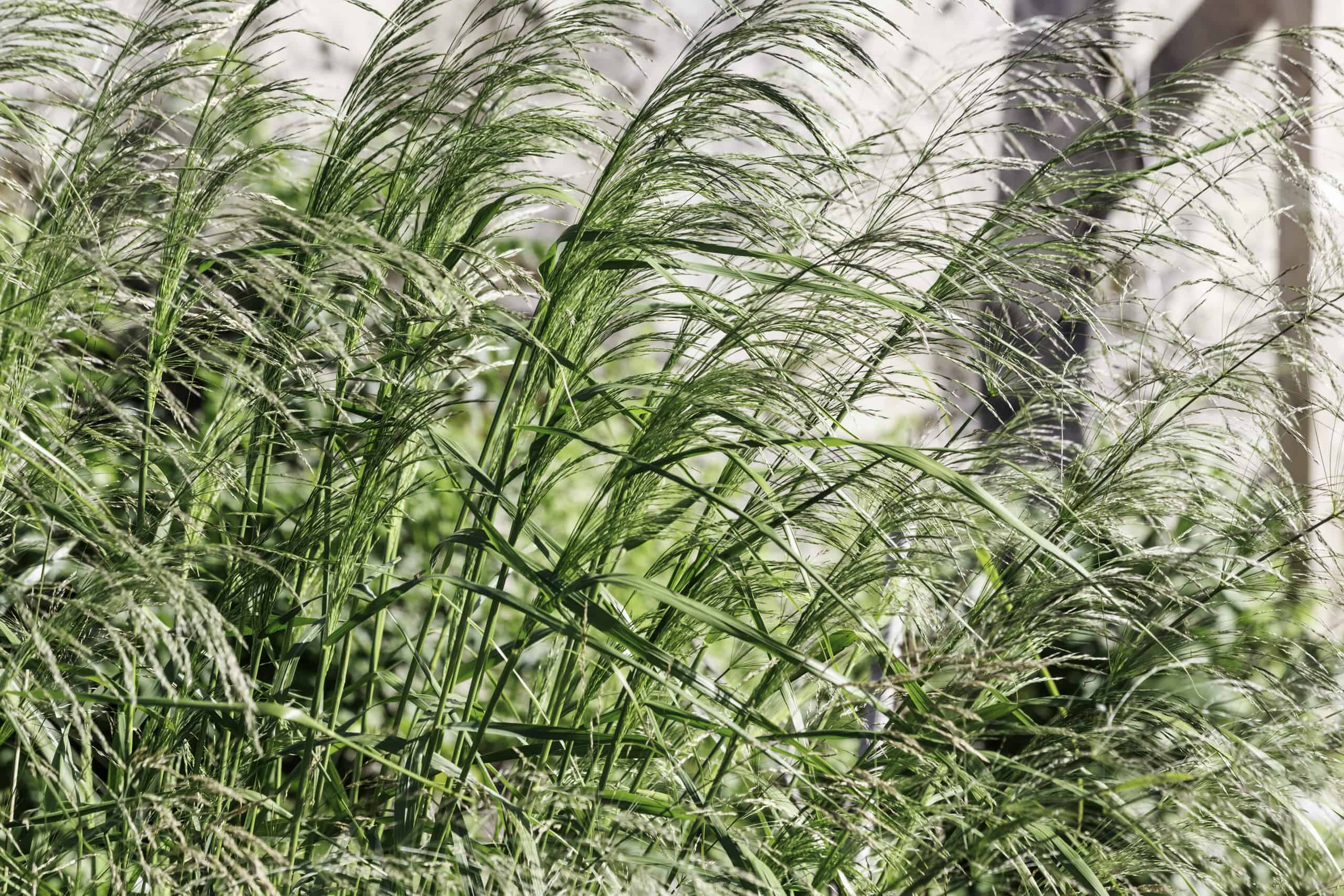Turf grass lawns are very popular, especially in the United States. But did you know that lawns are terrible for the environment and your pocketbook? In this article, we’ll explore some of the reasons you may want to give up the traditional lawn. You may consider replacing it with something more resilient. We’ll also talk about a few of the best grasses for Virginia growing zones. You will learn how you can incorporate them into your yard and landscape.
Why Are Traditional Lawns Bad?
Traditional lawns are something called a monoculture. This is when humans choose to grow a single species of plant across a large section of land. Monoculturing is very common in agriculture, where cultivators aim to produce large quantities of a single product. While this allows for efficient planting, harvesting, and maintenance, it detracts from the overall space in terms of soil health, biodiversity, and resistance to pests and disease. It also increases the overall maintenance requirements of the space
These downsides translate directly into the lawn environment. From pesticide and herbicide applications to constant fuel expenditures for mowing and, of course, watering during the warmer months, lawns can be quite a handful. With summer water shortages happening all over the country, the cost of watering a lawn is more than just monetary. Lawn maintenance often produces more greenhouse gas emissions than the plants can reabsorb. And with urban and suburban development expanding ever onward, pesticide-laden turf grass monocultures expand with them. Thus, killing important insects and decreasing suitable habitats for local plants and animals.
Instead of spending vital time and resources maintaining a fragile, often sterile, and environmentally disastrous monoculture, do yourself and your local wildlife a favor and plant some native grasses alongside your other landscape plants. These native plants are already well-suited for growing in your climate. Thus, increasing their usability by local wildlife and decreasing the overall cost of maintenance.
Best Grasses for Virginia
One of the best parts about planting multiple grass species is that your yard will change naturally with the seasons. When cool weather species begin to slow down at the onset of summer, native warm-season grasses can fill the void, providing structure, visual interest, and wildlife habitat. As fall approaches and the summer grasses go to seed, they provide valuable forage for local birds and transition seamlessly into the background of other cool-weather plants.
Below, we’ll talk about five of our favorite native grasses for Virginia landscapes, both cool-weather and warm-weather species.
1. Little Bluestem (Schizachyrium scoparium)
Little bluestem (Schizachyrium scoparium) is one of the more important native prairie grasses in Virginia. At one time, it was one of the region’s most dominant grass species. It is a relatively tall ornamental grass, growing 24–48 inches tall at maturity. In ideal conditions, it can sometimes reach heights of 60 inches.
Hardy to USDA zone 3, little bluestem grows readily throughout the entire state. It is also quite versatile in terms of its soil preferences. The grass tolerates nutrient-poor soils very well, reducing or even eliminating the need for fertilizer use. Over-fertilizing can cause the tall stems to flop over as It is also drought tolerant and heat tolerant, helping cut down on the environmental and monetary cost of frequent summer watering.
This ornamental grass also provides great visual interest in all seasons. It derives its common name from the light-blue tint that persists at the leaf bases throughout the spring and summer. Around August, it begins producing tiny, purplish-bronze flowers along 3-inch-long racemes. The color is apparent above the stems and blue-green foliage. As fall approaches, the flowers turn to beautiful panicles of silvery feather-duster seed heads that persist into winter and serve as a valuable food source for birds. Around this time, the plant’s foliage turns from its usual green to shades of bright orange and bronze.
In the landscape, little bluestem finds frequent use as an accent plant but also functions very well in groups along borders or as a privacy screen. Its long blades and dense, fountainous growth habit also give plenty of low cover for insects, birds, and small animals.
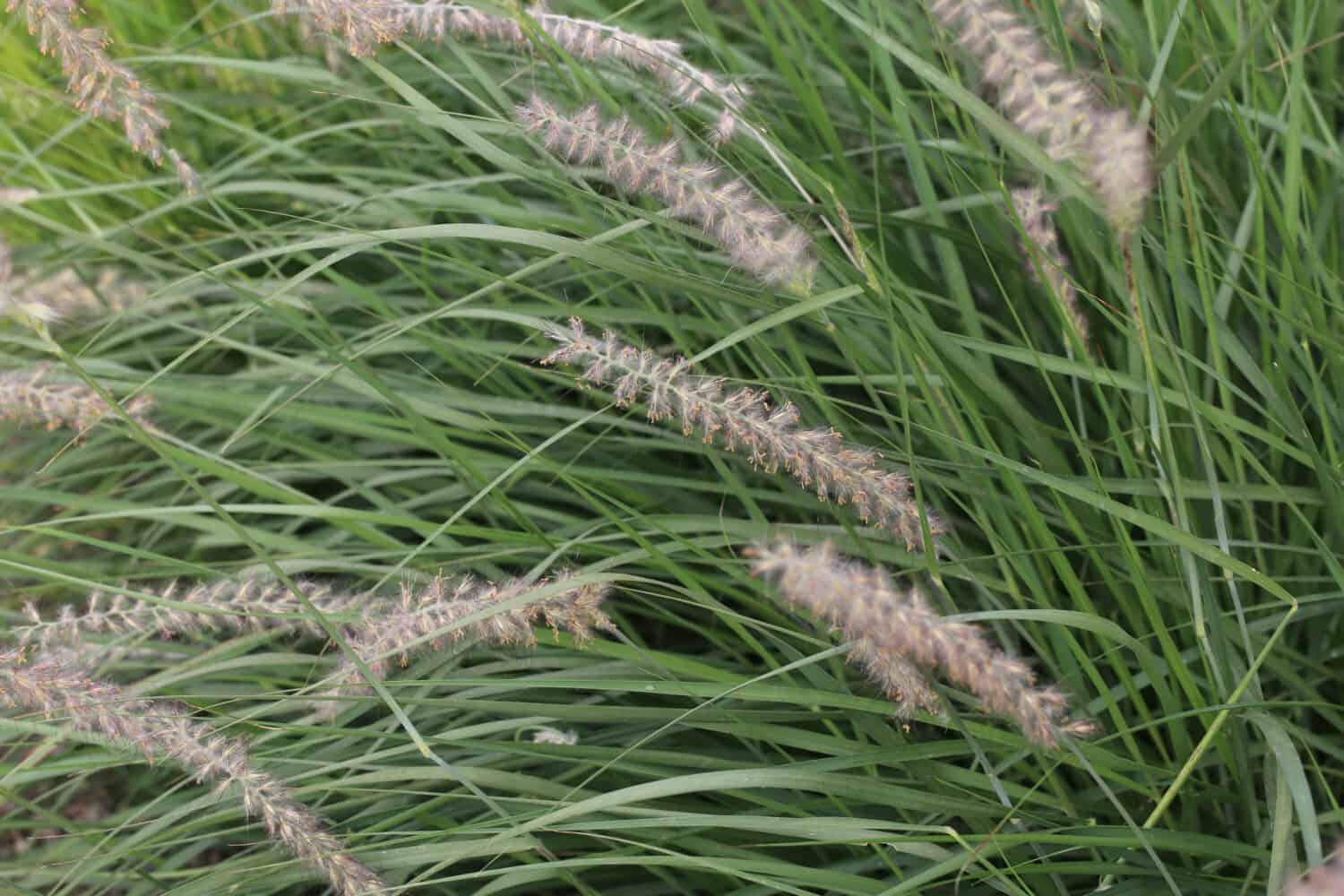
Little Bluestem has something to offer both homeowners and local wildlife in all seasons.
©Traveller70/Shutterstock.com
2. Switchgrass (Panicum virgatum)
If you have areas in your lawn where turf grass won’t even grow, then the native switchgrass (Panicum virgatum) may be a good fit for your yard. Switchgrass is tolerant of damp soil and occasional flooding, making it a useful plant to fill in spaces in the landscape where water tends to pool for short periods after heavy rain. It can also handle a wide range of nutrient profiles and soil structures, including poor, sandy soils and those that are heavy in clay.
Overall, switchgrass does best in full sun. Consider planting it along borders or as the centerpiece of smaller landscape plantings. Among shorter plant species, its upright growth habit and clumping nature can provide structure to the feature while ensuring the grass receives plenty of sunlight. Switchgrass can tolerate partial shade but may become leggy and floppy in overly shady locations. It is also tolerant of drought and isn’t particularly susceptible to insect pests or common foliar diseases in average growing conditions. Spider mites and thrips can occasionally cause trouble during long dry spells.
In ideal conditions, switchgrass usually grows to heights of 3 or 4 feet. It tolerates trimming to maintain the shape but does best where it can be left to its own devices. Beginning in the summer, around July, it produces tall flower panicles that often rise to about 6 feet in height. The flowers themselves are quite small and lightly pink, becoming beige as they mature to seed in the fall. Seeds persist through the winter, offering a wonderful food source for local birds and small mammals as other food sources become scarce.
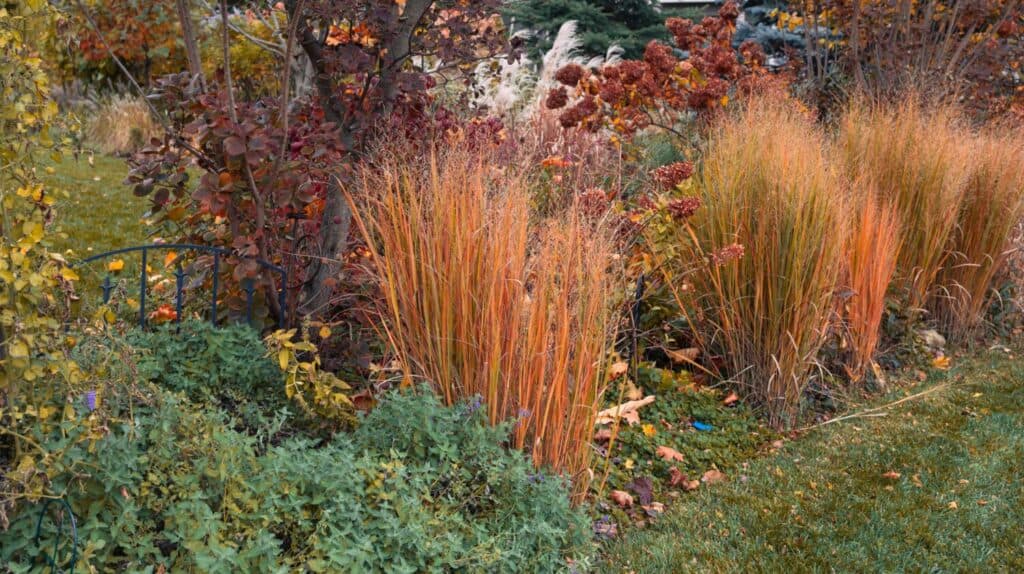
Switchgrass is great for breaking up textures in the landscape and looks great when left to its own devices. It is low maintenance and provides a wonderful winter food source for wildlife.
©Molly Shannon/Shutterstock.com
3. River Oats (Chasmanthium latifolium)
If you’re looking for grass that will add some spectacular fall color to your yard, river oat (Chasmanthium latifolium) is your plant. While most turf grass simply turns brown and dies back late in the year, river oats turn from bright, vibrant green to varying shades of yellow, copper, and gold in the fall. It lends brightness to the warm, bronzy colors that other native grasses bring to the landscape.
Like many native Virginia grasses, river oats tend to have an upright, clumping growth habit. Individual clumps can get fairly tall, up to 5 feet in ideal conditions, and can spread up to 3 feet wide. They do very well in groups and are particularly useful for controlling erosion on sloping sites. In these locations, the flower panicles that appear later in the season droop downhill, giving the planting a gorgeous cascading effect. They are especially beautiful as they dance in the breeze.
Adding to the beautiful fall color and attractive texture, local wildlife loves the seeds that appear from the flowers as they fade. They are also safe for humans to eat! Homeowners who are willing to experiment can use them as a cereal grain just like more common oats. With a bit of work, they make a great, seasonal source of flour for bread and biscuits.
The abundance of seeds, while functional for us and other animals, also means that river oats can spread quite aggressively in cultivation. Use this to your advantage when filling large spaces, but take care with placement in small landscapes. Mix it in with other dense grasses and shrubs to create a balanced polyculture, especially in small spaces.
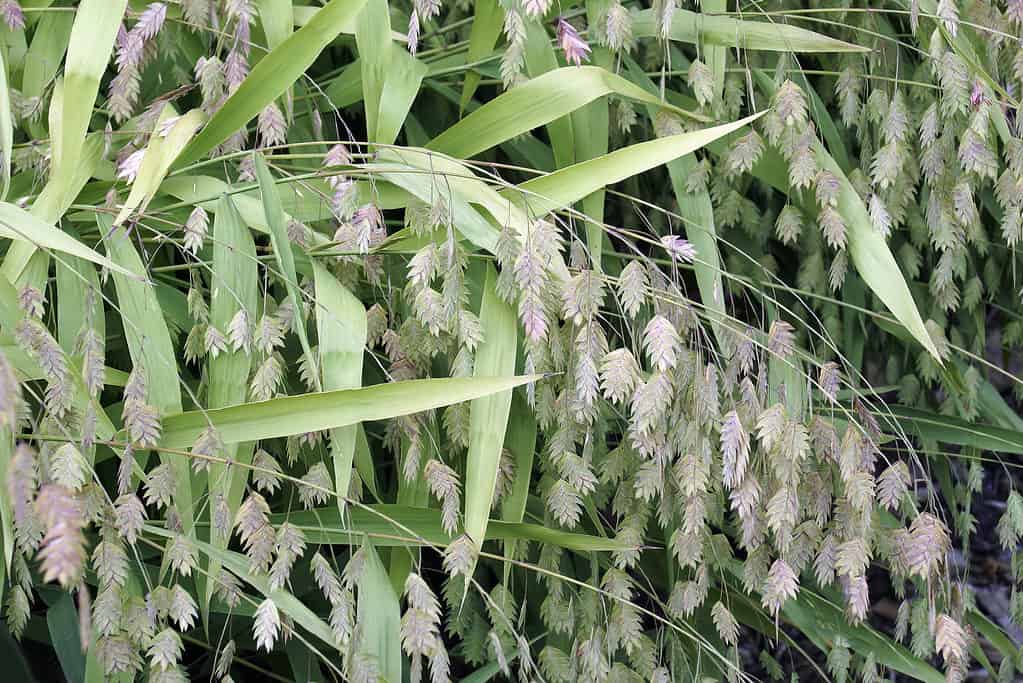
River oats produce cascades of flat spikelets that bow under their weight, dancing and bobbing the gentlest breeze.
©iStock.com/nickkurzenko
4. Eastern Gamagrass (Tripsacum dactyloides)
Whereas river oats and switchgrass provide wonderful fall forage for wildlife, eastern gamagrass (Tripsacum dactyloides) serves the same role in the summer. It is a distant relative of corn and produces its seeds on long spikes from June to September. If you want to keep songbirds flocking to your yard year-round, consider planting eastern gamagrass alongside other native grasses.
Like switchgrass, this species can grow rather tall. While it is responsive to trimming and can be cut as short as 4 inches without harm, it can grow to 12 feet in height if it is happy with its location. Its wide range of heights gives it great versatility in the landscape. Use it in landscape features to provide shade, plant as accents in tight groups, or arrange near property lines to give privacy. Make sure to place it away from walkways and high-traffic areas. The leaf edges are sharp when mature and can cut the skin. While it has a fairly strong drought tolerance, this species is adapted to wet areas. It prefers ponds, creeks, or streambeds and performs especially well in areas of the yard that are prone to flooding.
Eastern gamagrass thrives in areas with partial shade and can provide added interest in areas where deer frequent. By placing gamagrass in the distance, homeowners can allow the deer to comfortably forage for the corn-like seeds. For those with grazing animals like horses, cattle, or goats, large stands of eastern gamagrass can provide great forage and offset the cost of hay and commercial food.
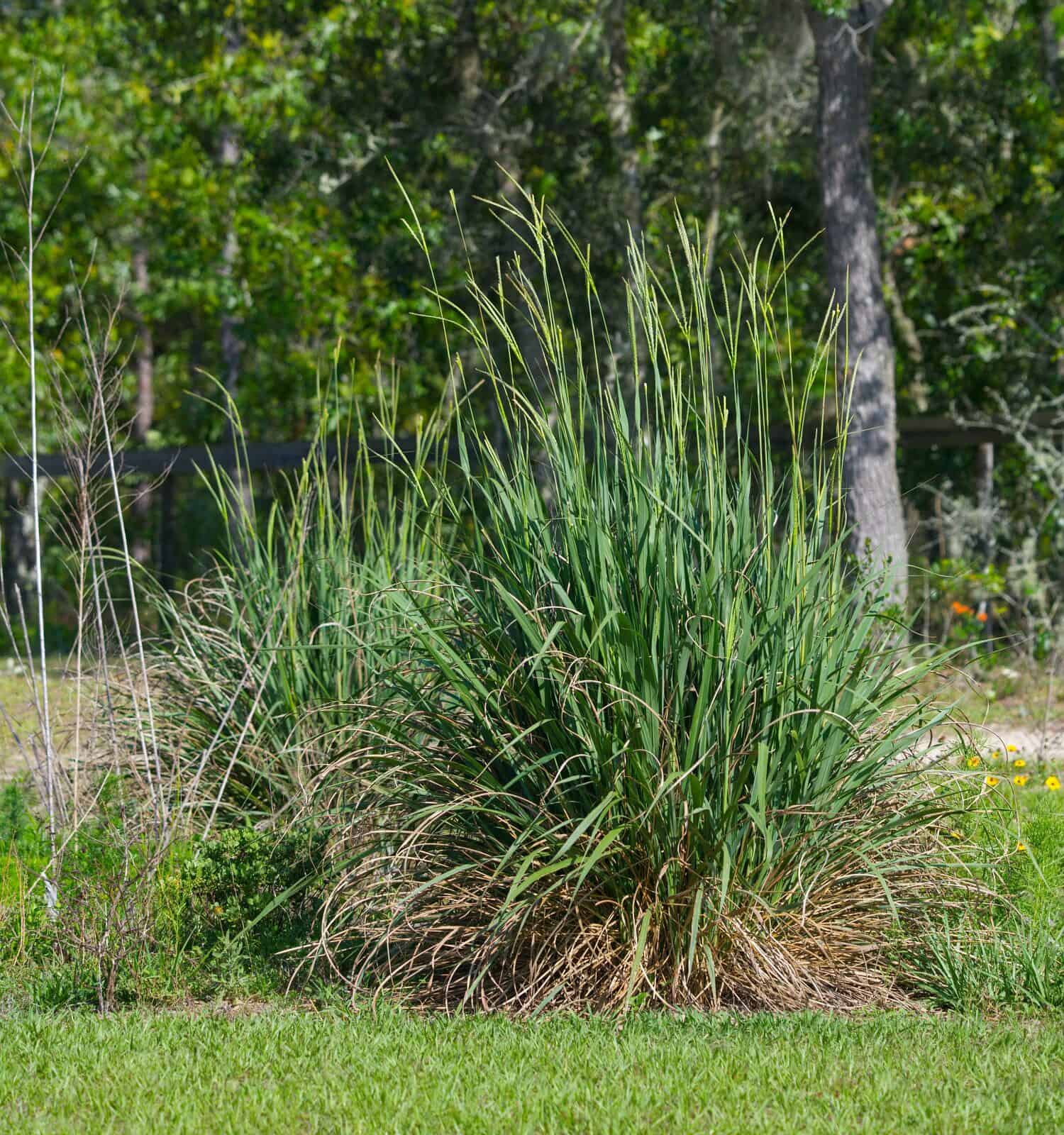
Eastern gamagrass is great summer forage for birds, deer, and grazing animals. It performs well in areas that are prone to flooding.
©Chase D’animulls/Shutterstock.com
5. Purple Lovegrass (Eragrostis spectabilis)
If you’re not a fan of the taller grasses, you may want to consider the much shorter purple lovegrass (Eragrostis spectabilis). This warm-season species forms low mounds that typically top out around 2 feet in height. It is great for adding contrast to taller, more columnar grass plantings. It produces unique flowers in the spring and gorgeous bronze foliage in the fall.
Purple lovegrass forms dense tufts and performs well as a ground cover in mass plantings. In late spring and early summer, its purple inflorescences give it a very fluffy, cloud-like appearance. The flower stalks and resultant seeds become tan with age and persist through the summer and fall. This provides valuable forage for rodents and songbirds. Like eastern gamagrass, purple lovegrass is good food for grazing animals and will attract deer in the fall and winter.
This species is just as hardy as other native Virginia grasses but prefers drier planting sites to wetter ones. It needs well-draining soil that doesn’t flood to thrive. That said, it does very well in nutrient-poor, sandy or gravelly soil and is great in mass plantings along driveways and gravel walking paths. Because of the ease with which it propagates by division in the spring, those willing to wait can fill large beds with just a few initial plants.
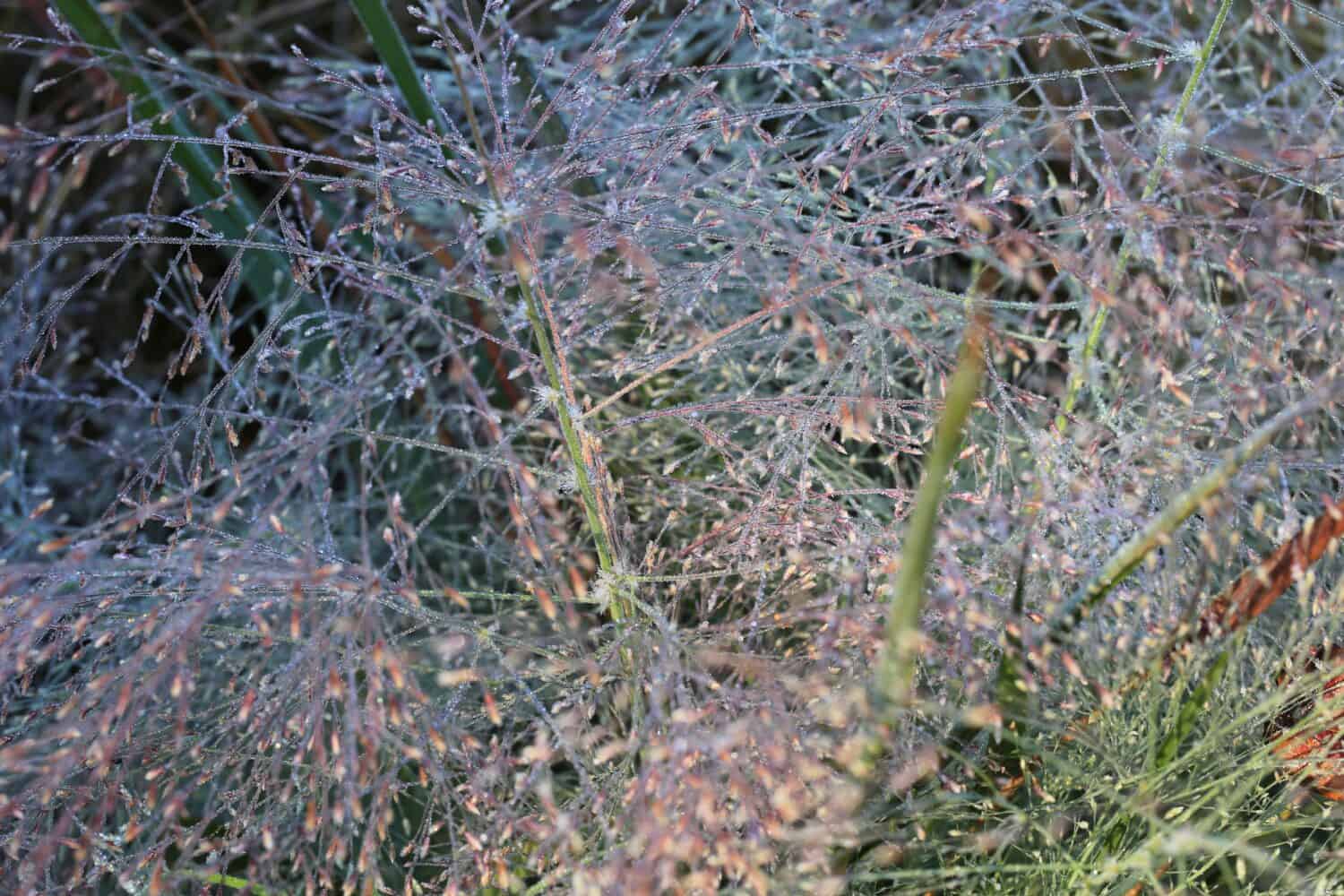
In the late spring and early summer, this native Virginia grass produces cloud-like masses of tiny, purple flowers on long inflorescences.
©Traveller70/Shutterstock.com
Thank you for reading! Have some feedback for us? Contact the AZ Animals editorial team.

